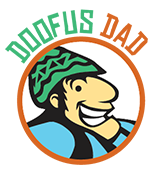Excerpt from Mark Johnson’s book, “Doofus Dad Does Everest Base Camp,” to be released in Fall 2018. Photo by Hobnail trekker Bill Shupp.
***
At some point in the morning, the trail split like it had done above Namche Bazaar, with the acclimatization hikers continuing up and those bound for Lobuche breaking off and heading up the valley. It felt a little sad to leave the comfort and safety of Dingboche. We all knew that from here on out, the creature comforts were essentially over.
As we topped a wide slope, the vista before us revealed our task: we would be walking along a gently rising ridge situated adjacent to a massif of snowy peaks with a valley in between. The ground was a rounded tundra covered in a lichen-ish vegetation that was more of a skin for the soil than anything else. It was mottled and gray, so Holly and I called it “elephant skin.” Here and there, small groupings of juniper bushes and boulders jutted out of the ground.
This walk was one of the most enjoyable yet, and not particularly taxing. We moved along in conversational groups, duos, or singles depending on how the mood was striking us. But although this hike wasn’t difficult, we also didn’t seem to be getting anywhere. Ever the philosopher, I’ve come up with a couple reasons why.
First, although we were probably walking at the same rate of speed as earlier in the trek, the landscape here was much more open and expansive. Imagine yourself driving 55 on a narrow, two-lane country road. Seems fast, right? Now do 55 on a six-lane interstate. Seems like you’re barely moving. It’s all a matter of perception.
Secondly, the scale of the Himalayas is unlike what most people have ever experienced.
Everything is huge.
So if you see an object in the distance — let’s say a house — that in Tennessee should take about ten minutes to reach by foot, you can bet it’s an hour’s hike in the Himalayas. Our perception of distance is thrown out of whack by the sheer size of the surrounding mountains. Conversely, a native Sherpa would probably be surprised by how close objects are upon first visiting other, less mountainous areas of the world.
We continued moving along the elephant skin, wondering if we would ever reach our destination. Mid-morning, we came upon a couple of stone huts with dry-stack rock walls enclosing a small pasture—yak keeper cottages. The backs of the structures were built into a berm in the ridge and the roofs were thin slabs of slate, framed by the towering mountains behind them. We spent some time here taking photos and videos, some of which would prove to be my favorites. (See a short video here.)
Eventually, the wide trail narrowed and became rockier. We curved right and were greeted around the bend by the astonishing site of the Khumbu Glacier’s endpoint high above us, a gigantic pile of rubble. Below the glacier was a steep jumble of boulders and meltwater that constituted the headwaters of the Dudh Kosi River. For nearly an hour we picked our way carefully through this streambed of boulders and crystal-clear water to our lunch destination on the other side, a tiny village called Thukla, Dughla, or Cincinnati, depending on whom you asked. Again, due to the skewed scale, it never seemed to be getting any closer. I felt like an ant trying to cross a football field.
Eventually, our diligence paid off and we reached our rest area along the EBC interstate. We climbed a steep embankment into the village, basically a clearing upon which a single teahouse and a couple other structures were built at the base of an imposing hillside leading up to the glacier. I could see the trail threading up through the boulders and switchbacks, and made a mental note to eat plenty of lunch.
I was going to need it.
Just to make things more fun, clouds were rolling in and tiny snow pebbles were beginning to pelt us.
The teahouse was crowded with trekkers, but Dawa had called ahead and reserved our table space. Soon we were seated and sipping on delicious hot teas. The Sherpa stew that Holly and I ordered was equally good, and we made a point to eat everything even though our appetites were beginning to wane a little, a common issue at altitude.
Toward the end of lunch, Luis said, “Uh, oh” and pointed out the window.
It was snowing in earnest, now.
We looked at each other and shrugged. These were the cards we were dealt, and we knew the weather would eventually take issue with our leisurely trek. Now it was calling our hand.
***
“Doofus Dad Does Everest Base Camp” will be released Fall 2018 to Amazon Kindle. Join Mark’s Reader’s Club to be a part of his book launch team and get a free download HERE.



Leave a Reply
Want to join the discussion?Feel free to contribute!